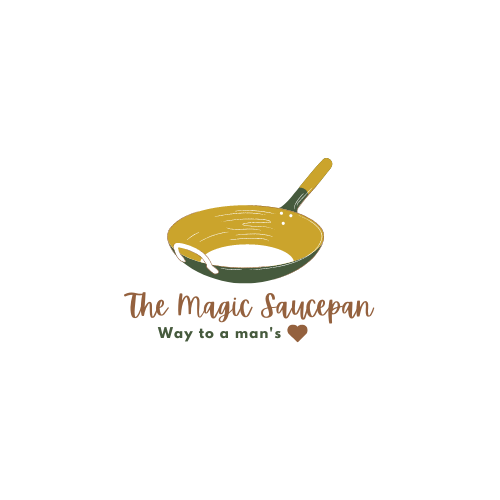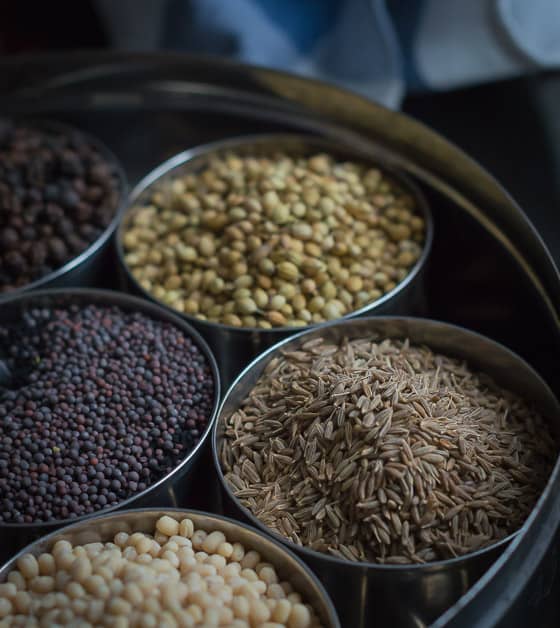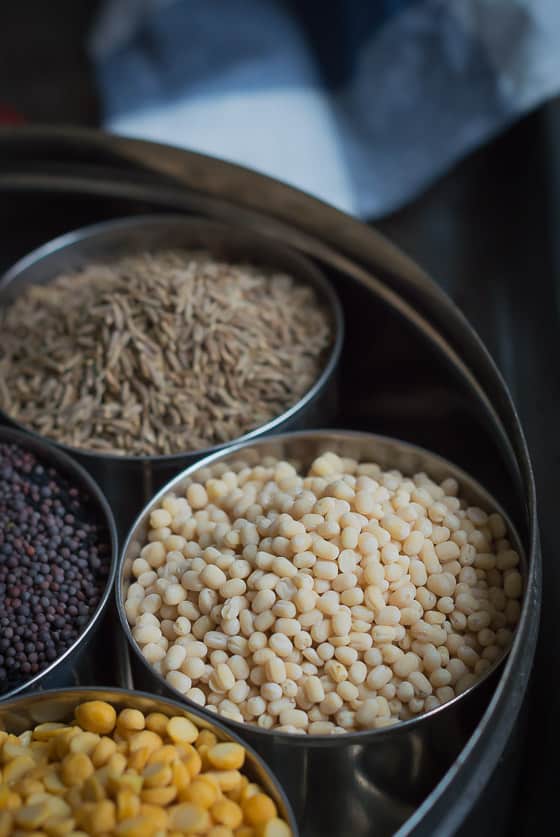Hey guys. Hope you all had a good start this new year. Ready to get started ? Super. In my last post, I talked about an important technique/method that is very unique to Indian cooking - Tadka (Tempering). I can’t stress enough how important that it is. If you have not read that post, go here. Once you understand what it is, then the rest of the process is pretty straightforward. As you know, Tadka is done with spices and today’s post is to familiarize yourselves with the South Indian spices. Don’t worry, I am not going to go into the properties of the spices (no chemistry lessons). I'll mention the ones that we use often and when and how to use it.
Essential South Indian spice ingredients:
- Mustard seeds
- Cumin seeds
- Coriander seeds
- Fenugreek seeds
- Black peppercorns
- Dry Red chillies
- Channa dhal
- Urad dhal
Fresh Herbs & spices
- Curry leaves
- Coriander leaves
- Ginger
- Garlic
- Green chillies

In tamil, my native tongue, we call the spice box as “Anjarai petti” literally translated as a 5-compartment(anjarai) box (petti). I think over the years it grew and now its come to seven. 7 has been standard since my grandma’s days. “ The spices in the box vary from region to region and family to family. Spices that you commonly use in your everyday cooking are stored in that box and kept within easy reach.
While the first six are spices (in their seed forms), the last two in the list are lentils. These two lentils are always used in combination with the other mentioned spices. Hence these two became an integral part of our masala dabba. For our everyday meal, we roast a few of these in a pan, grind them and use it as powder or as a paste when ground with grated coconut. You can check this cheatsheet - One page cheatsheet for Tadka / Tempering that I did in my previous post. It will help you understand how these are used in combinations.
I am often asked by my friends and readers; what is channa dhal or urad dhal ? What is tempering? What is methi ? Etc… So, this is mainly an informative post. Below you can see the image of individual ingredients. Apart from this you might also need curry leaves, green chillies and Coriander leaves. When you are just beginning to explore a cuisine, you might not want to stock your pantry with all the ingredients but you must have the essentials at the least.
These seven spice ingredients mentioned above will help you to smoothly cruise through the South Indian cooking. The best part is the spice powders like coriander powder and cumin powder can also me made easily when you have the seeds. Roast a little and grind them. Tada! You don’t have to buy them in bulk when you know you are not going to use them often.
So in continuation with this, in my next post, i'll talk about the spice powders that we commonly use.
Notes:
Dhal or dal is the common name for lentils & pulses.
A closer look of the everyday South Indian spices:













Raina Gustafson says
Thank you for the tadka cheatsheet. I love it! Just what I need to get more comfortable making a variety of dishes.
Nisha says
Thank you Raina and am glad you found this useful. Please let me know if you have any more questions for need any clarifications. Am happy to help.